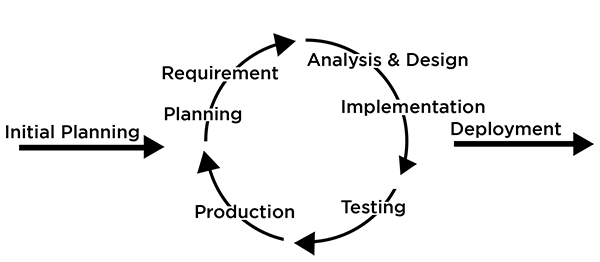Iterative (and Incremental) Model
Introduction
The iterative process model is the implementation of the software development life cycle in which the initial development is started based on the initial requirements and more features are added to the base software product with the ongoing iterations until the final system is created.
Features of Iterative Model
The iterative model was designed as an improvement to the existing waterfall model. The waterfall model is a linear SDLC model whereas the iterative model is cyclical in nature.
Once the initial requirement planning process is completed, some of the other stages are repeated. As these cycles are completed and implemented, the overall end product is improved and iterated on.

Advantages
- This model produces a working software much quickly and early during the SDLC.
- This model is very flexible. As new functionality can be added to it at any time of development.
- This model is considerably cheap as it is less costly to change requirements as compared to the other process models.
- The end-user or the stakeholders can give their feedback quickly, which can then be implemented into the system.
- The errors and bugs in the system can be identified early.
- Takes smaller development teams as compared to other process models.
Disadvantages
- Problems pertaining to the system architecture can come up because all the requirements are not gathered upfront.
- It is not a good choice for small projects.
- More resource-intensive than waterfall model.
- Risk analysis requires highly qualified specialists to check the risks in our system.
- The whole process is difficult to manage.